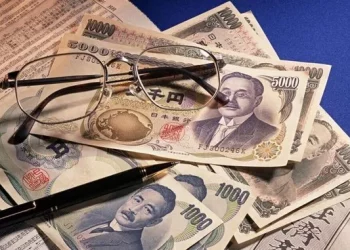On Thursday, the Indian Rupee (INR) partially recovered from its all-time closing low reached the previous day. The INR’s decline had been exacerbated by falling Indian equities following the government’s decision to increase capital gains tax on equity investments and derivatives. Investor hesitance toward riskier assets and persistent demand for the US Dollar (USD) have been limiting the INR’s potential gains in the short term. However, a drop in crude oil prices and potential intervention by the Reserve Bank of India (RBI) may help mitigate further losses for the INR.
Looking ahead, market focus will shift to the US Gross Domestic Product (GDP) data for the second quarter, set for release on Thursday. Attention will also turn to the Personal Consumption Expenditures (PCE) Price Index data for June on Friday. Any indications of softer inflation could bolster expectations for a US Federal Reserve (Fed) rate cut and apply downward pressure on the USD.
Daily Digest Market Movers: INR Recovers Amid Challenges
Indian equity indices continued their decline for the fourth consecutive session. The BSE Sensex dropped by 280 points, or 0.35%, closing at 80,149. The Nifty 50 fell by 65 points, or 0.27%, ending at 24,413 on Wednesday.
In economic data, India’s HSBC Manufacturing PMI advanced to 58.5 in July from 58.3 in June. The Services PMI also improved to 61.1 from 60.5. In the US, the S&P Global Composite PMI rose to 55.0 in July from 54.8, while the S&P Global Manufacturing PMI decreased to 49.5 from 51.6, missing the expected 51.7. The Services PMI increased to 56.0 from 55.3.
The US Goods Trade Balance for June reported a deficit of $96.0 billion, narrowing from $99.4 billion in May but falling short of expectations. The preliminary US GDP growth estimate for the second quarter is projected at an annualized 2.0%, up from 1.4% in the previous quarter.
Technical Analysis: INR’s Longer-Term Outlook
The INR posted modest gains for the day. The USD/INR pair has been making higher highs and lows, staying above the 100-day Exponential Moving Average (EMA) on the daily chart, indicating a bullish trend. The 14-day Relative Strength Index (RSI) is in the bullish zone at around 63.00, suggesting potential for further gains.
The initial upside target is the all-time high of 83.79. Sustained bullish candlesticks and trading above this level could push the pair towards the psychological mark of 84.00.
Conversely, if USD/INR consistently trades below 83.65 (the low of July 23), it could drop to 83.51 (the low of July 12). Further declines could see the pair testing 83.42, the 100-day EMA.
Related Topics:


























